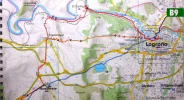Steve Hackman
Member
- Time of past OR future Camino
- Camino Frances (2015, 2017)
Muxia & Fisterra (2015)
Via Francigena (2018)
Camino Portuguese (2020)
I just got my John Brierley guidebook which seems to be what many pilgrims recommend. I can already see it will be of great value on my upcoming first camino. However I don't want my pilgrimage to be a preset "staged" walk. I was curious what others may suggest / recommend from their walks where they either disregarded the guidebook or experienced a cafe, albergue, church, or other place of interest not mentioned.
Or just an experience where you went "off the guidebook" so to speak
Or just an experience where you went "off the guidebook" so to speak






















